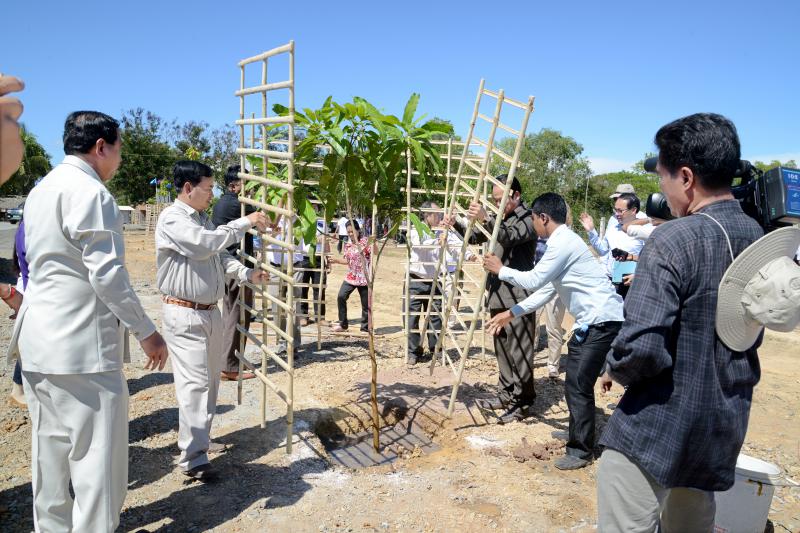One of the key results of the project has been the preparation of maps which indicate the vulnerability of the Cambodian roads to the impacts of climate change, most notably hazardous floods. The MRD now has in place a GIS-based system to assess the vulnerability through very detailed information including hydrological models scaled to local use. The project has also helped to improve the capacity of the MRD to effectively use the system, for instance for the identification of “flood black spots” needing attention through further adaptation measures. Flood black spots are road sections that are particularly vulnerable to flooding.
Green planning has been tested as an additional measure to adaptation solutions based on engineering. Through planting of trees along the road sides more water can be bound to the ground and the flood effects are expected to be reduced. Planting trees also provides co-benefits for the communities living along the roads; fruit trees will bear fruit that can be sold or eaten, leaves can be used for farming purposes and branches as firewood. In addition the trees sequester carbon, contributing to climate change mitigation. The tree planting activities continue to be implemented during 2015. Both the engineering solutions such as reinforced embankments and road shoulders, and the results of the green planning will be assessed and the need for changes in design standards for new roads, and roads to be rehabilitated, will be considered.
The project has brought a valuable set of lessons learned ranging from project design to implementation-related issues. Results will also be compiled in a user-friendly manual which will enable the MRD to use the results of the project in future road construction and improvement work in the country. Dissemination of results will also take place to benefit other NDF co-financed road transport adaptation projects elsewhere in the world.
NDF reviewed the project progress and results last week in Cambodia together with its financing partner Asian Development Bank (ADB). NDF’s involvement in the climate change work in the road sector in Cambodia will continue within the second phase of the Rural Roads Improvement Project (RRIP) together with the ADB.
Source: Nordic Development Fund | 25 May 2015














